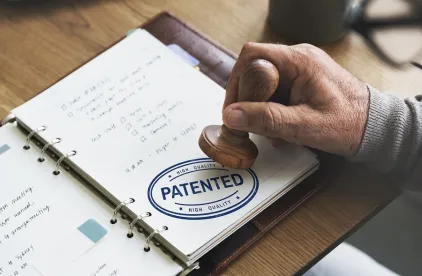In the first-ever final written decision in a post-American Invents Act (AIA) derivation proceeding, the Patent Trial and Appeal Board (PTAB) found that the petitioner had not shown that an inventor named in the respondent’s patent had derived the invention from the inventor named in the petitioner’s patent application. Andersen Corp. v. GED Integrated Solutions, Inc., Case No. DER2017-00007 (PTAB Mar. 20, 2019) (Arbes, APJ).
GED owns a patent directed to a spacer frame and fabrication process for use in an insulating glass unit. Insulating glass units are used in windows to reduce heat loss during cold weather and are typically formed by a spacer assembly sandwiched between glass panes. The named inventors on GED’s patent are William Briese and Clifford Weber. Andersen owns a patent application directed to an offset seam for an insulating glass unit and a method of use and manufacturing the same. The named inventor of Andersen’s patent application is Sammy Oquendo. Andersen filed a petition for derivation proceeding arguing that several years before GED filed its patent, Oquendo had conceived of the inventions claimed in GED’s patent and communicated them to multiple employees at GED. The PTAB instituted on Andersen’s petition.
After a trial, the PTAB held that Andersen did not demonstrate that an inventor named in GED’s patent derived any of the claimed inventions from Oquendo. To show derivation under the AIA, Andersen was required to establish by a preponderance of the evidence (1) prior conception of the claimed subject matter and (2) communication of the conception to an inventor of the other party. The dispositive issue in the proceeding was whether Andersen had proven that Oquendo conceived of a spacer frame with a “stop” spaced away from the corners of the frame, as required by GED’s patent claims, and communicated that conception to a named inventor on the GED patent.
The PTAB found that while Oquendo conceived of a spacer frame with a stop, he never communicated that concept to anyone at GED. Although there was undisputed evidence in the record that Oquendo had numerous discussions with the named inventors about window frames, and even provided the named inventors with a prototype, the PTAB found no evidence that Oquendo ever communicated anything about a frame with a stop being away from the corner. The PTAB also noted there was sufficient documentary evidence that Briese had independently conceived of the stop feature for the spacer frame claimed in GED’s patent. As a result, the PTAB found that because Andersen had not established that Oquendo had communicated the claimed stop position to the named inventors, Andersen had not proven derivation.




 />i
/>i

